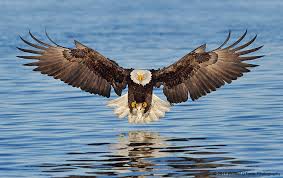This June 6 marks the 71st Anniversary of D-day, the Allied invasion of Fortress Europe. That day defined a generation in a way we can’t even imagine today. It marked the beginning of the end of the Third Reich as hundreds of thousands of Allied sailors, pilots, airmen, soldiers, engineers, paratroopers and medical personnel drove into the coast of Normandy. In my book ‘Flying on Film – A Century of Aviation in the Movies 1912-2012’ I wrote about one of my favorite war movies, ‘The Longest Day.’ This film was epic in scope, vision and cost. But it was the only movie ever to show the entire Normandy Invasion from virtually every perspective.
Here is an excerpt from the book.
Darryl F. Zanuck committed Fox to producing the biggest and most extravagant war movie ever made in 1962 with The Longest Day, based on Cornelius Ryan’s bestseller. The big-budget epic of the Normandy Invasion has been the subject of many books, articles and documentaries, but here it will be just about the aviation sequences.
While most viewers recall the token appearance of two Luftwaffe fighters strafing Sword Beach during the landings, there were some stunning nighttime scenes of British gliders approaching the Orne River. The glider landing near Oistreham depicted the British 6th Airborne Division’s Oxfordshire & Buckinghamshire Light Infantry’s assault on Pegasus Bridge.
Richard Todd, who had played Wing Commander Guy Gibson in The Dam Busters in 1955, played the role of Major John Howard. Todd himself had been in the 6th Airborne and fought at Normandy. The British Horsa gliders are shown at night and first seen as silent black silhouettes. Then the shot cuts to the flight deck of a Horsa. The towing plane veers off. The camera frame is fixed with the glider, so every movement of the control column by the pilots result in the glider banking against the back projection. The audience, seeing the pilots turning the wheel almost reflexively, leans into the turn. It’s very easy to believe the footage is real, right up to the almost-silent approach and violent, noisy landing.
Battle of Britain veteran Colonel Josef “Pips” Priller, played by the ebullient Heinz Reinke, leads his wingman in a strafing run along Sword Beach to attack the British 3rd Division. The planes are Messerschmitt Bf-108 Taifun monoplanes owned by the Spanish Air Force. Priller and his wingman, Heinz Wozardczyk, actually flew Focke-Wulf Fw-190s but in 1962 they were even rarer than 109s. The strafing footage was done from a camera ship while long rows of squibs buried in the sand were detonated in sequence. The mass of troops running from the approaching fighters stretches for nearly half a mile and is extremely effective. Exploding trucks and gas fires erupt as the plane flies over. Priller then laughs that the “Luftwaffe has had its day.”
HBO’s Emmy Award-winning miniseries Band of Brothers (2001) was based on Stephen Ambrose’s best-selling book. While only short sequences in the first two episodes depict aerial operations, the cinematography and flying are unforgettable. Several C-47s and C-53s were obtained from various European and American sources. The aircraft were painted with the bold black and white Invasion stripes on wings and fuselage. The stripes on the planes appear sloppy and crude, which is exactly how it was done in 1944. Since thousands of fighters, bombers, transports and gliders had to be painted, only cursory care was taken to make the stripes neat and clear.
With Michael Kamen’s evocative score accompanying the loading scenes on the evening of June 5, it is easy for the viewer to become mesmerized by the scope of the event. The takeoff and assembly footage was given greater impact by the use of CGI and miniatures but it’s hard to tell where.
HBO took great pains to assure technical accuracy, but a few minor concessions were made for the production. Instead of the usual 24 to 28 paratroopers normally carried in the C-53 Skytroopers, only twelve are seen in each aircraft. This may have been to keep from “crowding” the shot. The interior of a C-53 permitted little elbow room when fully loaded. Having flown in the last surviving Normandy C-53D, Inland Empire CAF’s D-Day Doll, the author can say the sound effects of the shaking planes on takeoff and in flight fully convey what it was like on the way to Normandy. Ed Pepping, a veteran of the famous Easy Company of the 506th Parachute Infantry Regiment of the 101st Airborne agrees. “Band of Brothers was incredible.”
© 2012 by Mark Carlson All Rights Reserved
Come and join my blog. Be sure to comment
